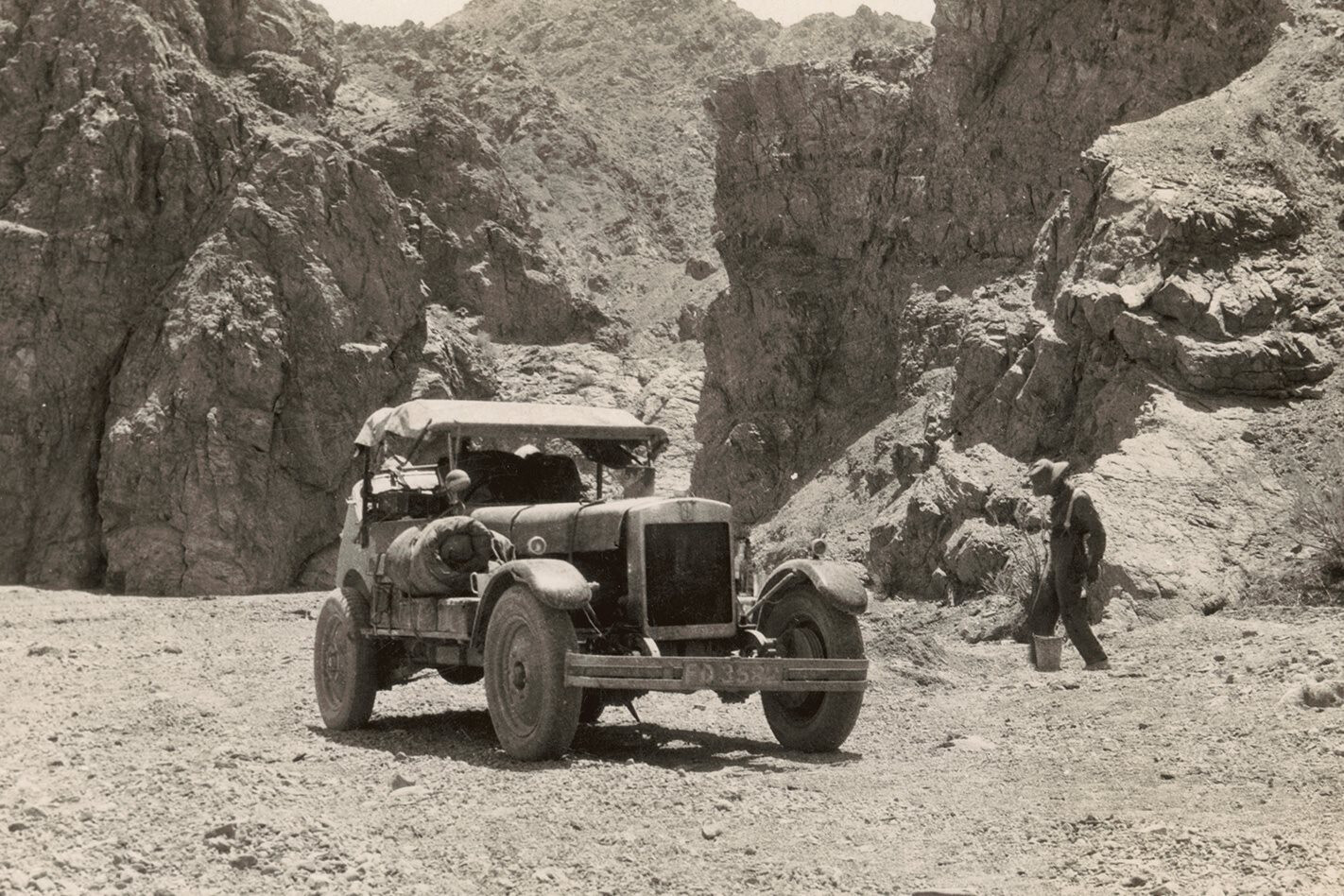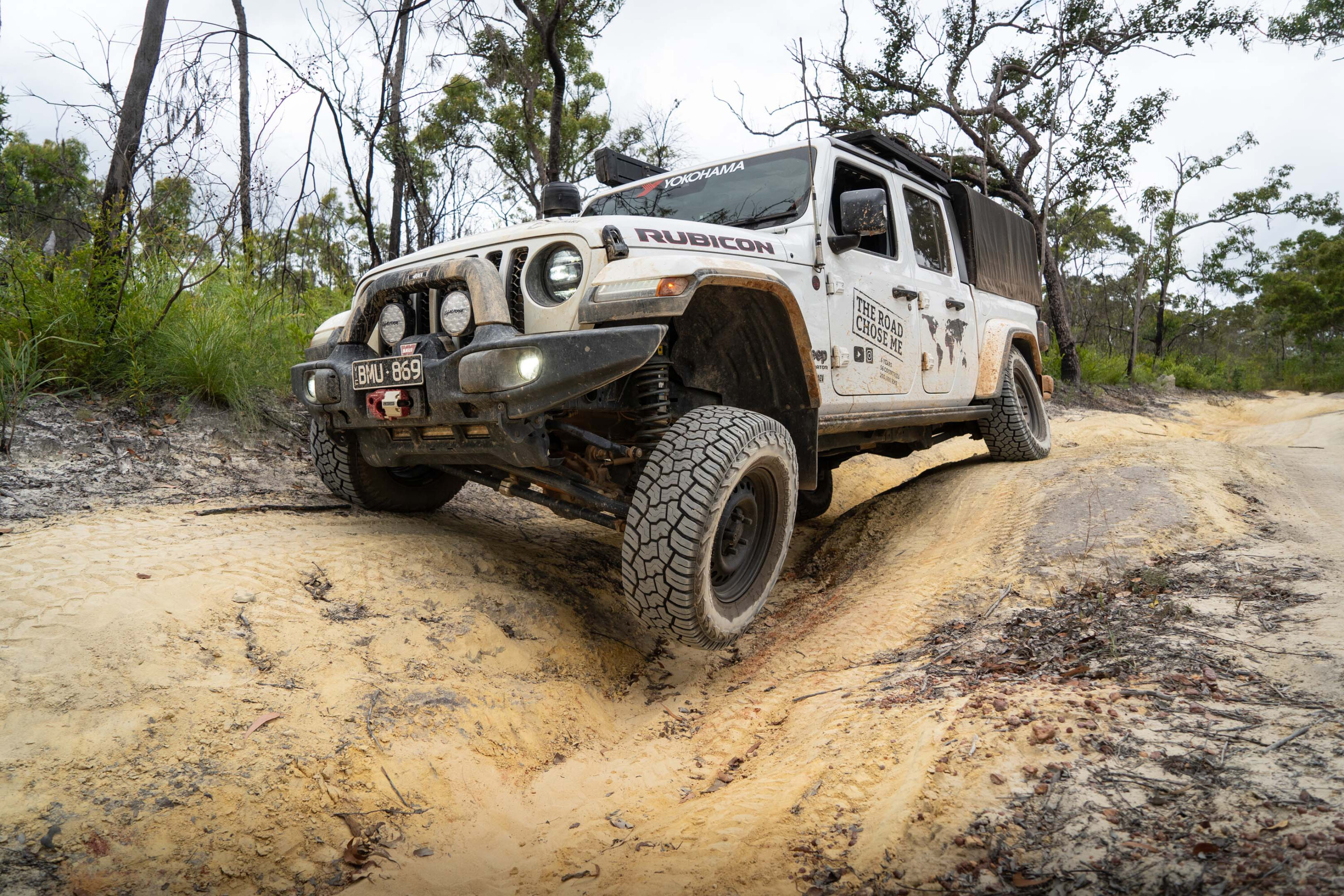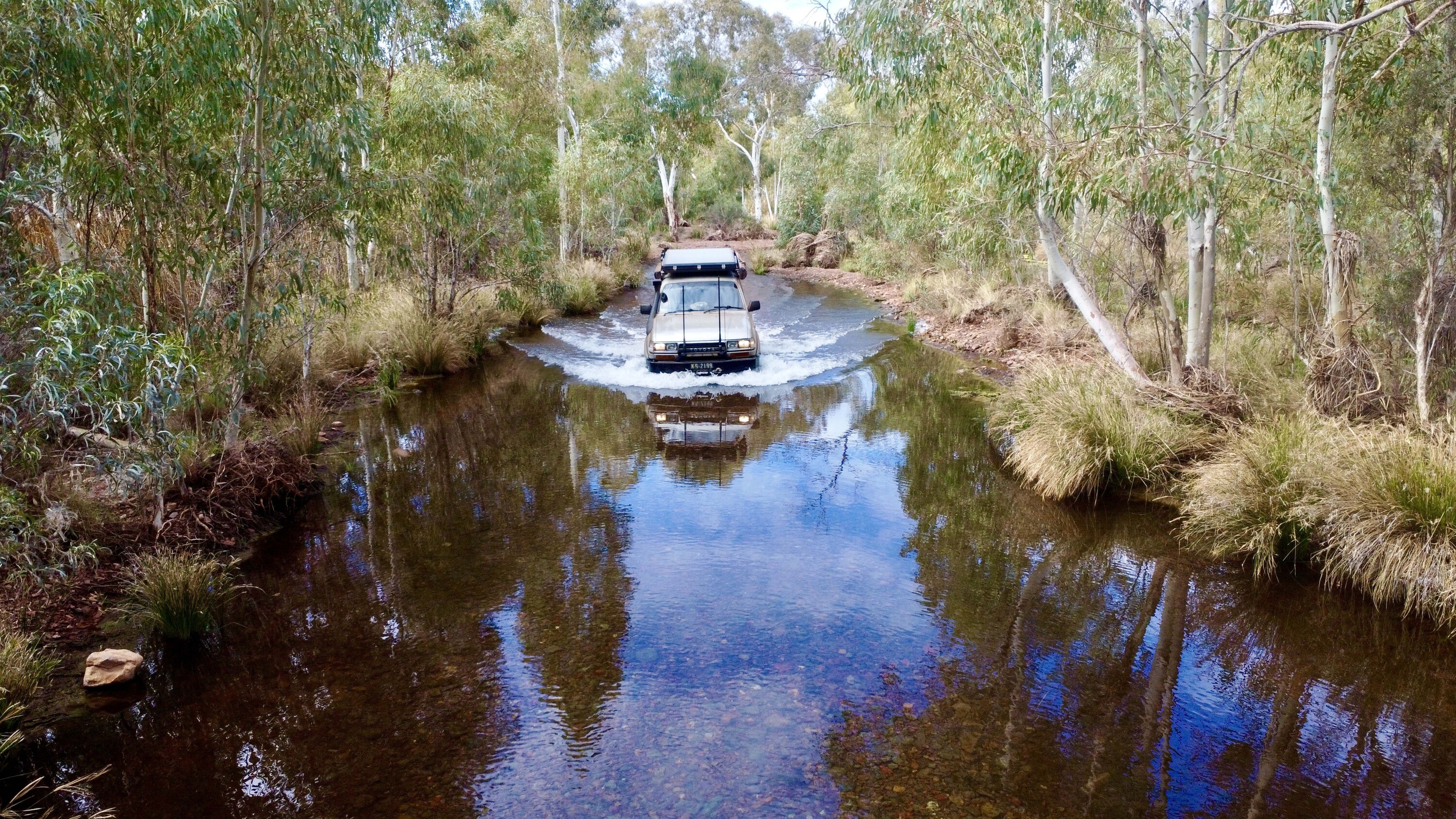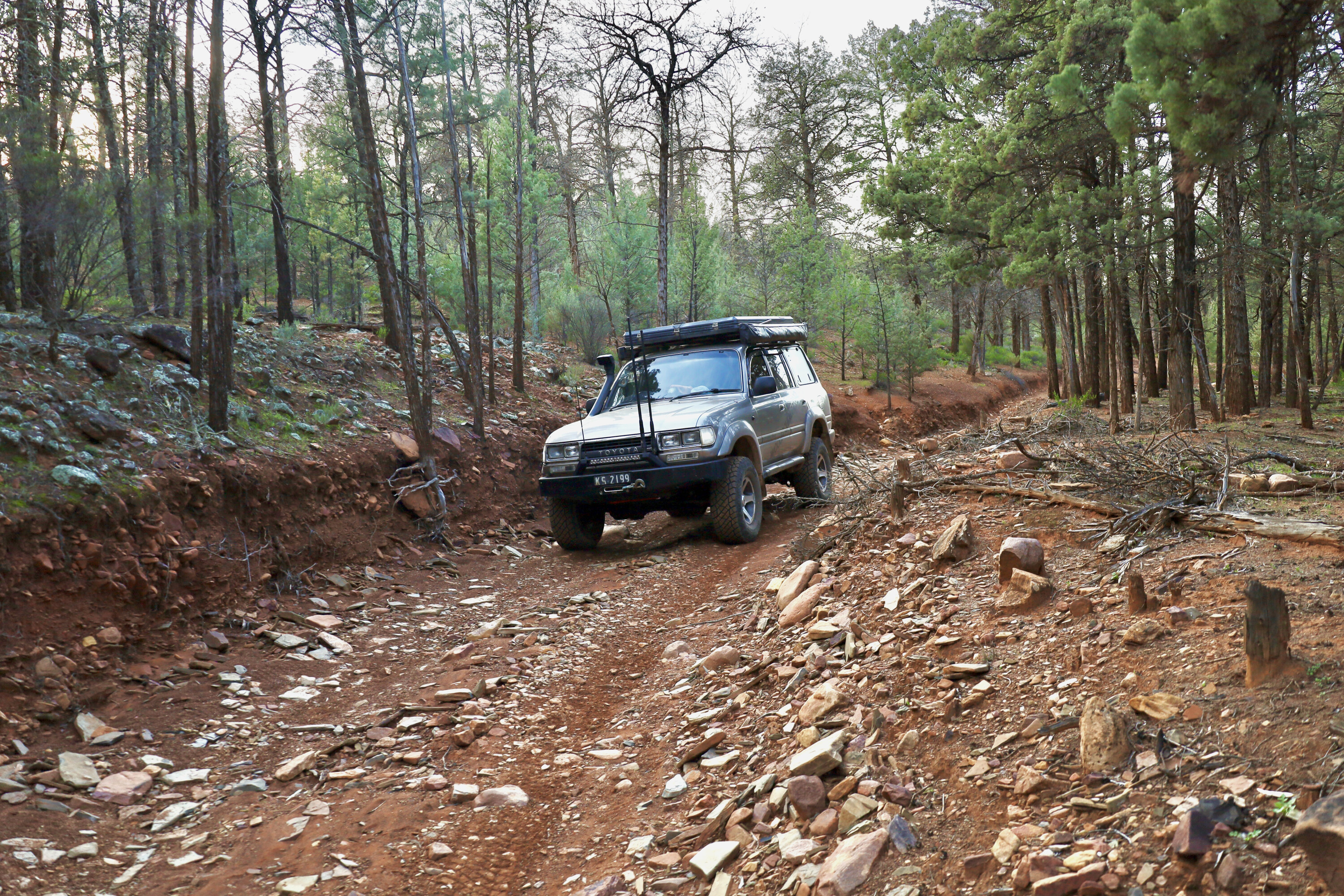ON JULY 26, 1928, the streets of Melbourne were crowded with thousands of people (mostly men, actually, going by the photographs of the day) as they waited patiently for their hero to arrive.
This was first published in 4X4 Australia’s June 2013 issue
When Francis Birtles drove his battered and tired 1925 Bean 14 car, which he affectionately called the ‘Sundowner’ because of his knack of arriving at sundown at some remote station homestead for dinner, the crowd went wild.
Feted at a civil reception soon afterwards, he and his travelling companion succumbed the next day to the rigors of their trip, not to mention malaria, and spent the next two weeks in hospital.
For Birtles, though, the nine-month trip from the UK across Europe, the Middle East and Asia to Australia, and then through the outback that he knew so well, was the crowning achievement of his illustrious career.
Born in 1881, Francis Birtles went reluctantly to sea at 15, but enlisted in the Cape Colonial Forces at the outbreak of the Anglo-Boer War in South Africa in 1899. Contracting black water fever he returned to Australia in 1904, and a couple of years later he set out on what was to become his lifelong career.
Just after Christmas Day in 1906, he peddled out of Perth on a pushbike to become the first person to bicycle the country from west to east across the Nullarbor, when tracks of any sort, for the most part, were non-existent.
Almost immediately, with the little fame he had gained from that first trip, he set out on a new bike to ride around the eastern half of the continent and to write a book on his exploits; Lonely Lands was published in 1909.
History: Talbot South-North crossing
With a book behind him and numerous newspaper articles written on him, Birtles was the best-known cyclist of his day. In that same year he set a new record for a west-east crossing, and in 1910-1911 he set off on a complete circumnavigation of the continent.
In 1912, with Syd Ferguson, a mechanic for the Australian importers of the Brush motorcar, he set out to become the first to drive a car from Perth to Sydney.
By now Dunlop Tyres was a near-permanent sponsor of his expeditions, but Birtles’ wasn’t putting all his faith in these newfangled mechanical contraptions; his trusty bike, shod, of course, with Dunlop tyres, was strapped to the back of the heavily loaded vehicle. Arriving in Sydney 28 days after their departure from the WA capital (and just 3 days faster than his bicycle ride), the pair were hailed as heroes.
In 1913 he set off again from Sydney, this time in a Ford Model T, and drove the vehicle from Burketown on the Gulf of Carpentaria through outback Queensland and south to Melbourne.
His next adventure in 1914 was with acclaimed Australian film maker, Frank Hurley. They set off in a Model T and drove from Melbourne to Sydney, onto Darwin, down the west coast of Australia to Perth, across the Nullarbor, which by then Birtles’ knew pretty well, to Adelaide and then Melbourne. The result of this trip was the film, Into Australia’s Unknown.
The following year he set of on a seven-month filming trip from Sydney to Broken Hill onto Quorn in the Flinders Ranges, before turning north to Cooper Creek. Reaching the Gulf at Normanton, he headed south to Melbourne across outback Queensland. The film, Across Australia in the Tracks of Burke and Wills, opened to audiences on Christmas Day in 1915.
For the next few years, Birtles wandered the outback and was more at home in the desert country than in the cities. With his brother Clive and an MH Ellis, a well-known journalist of the day, they set a new record for the Brisbane to Sydney run, and in 1919 he made another film, Through Australian Wilds. Sadly, this and his other movie epics no longer exist.
In 1921 the Australian government sent him out on a trip through the heart of Australia to find a route for the railway line which was planned to be built to Alice Springs and north. The trip ended in disaster north of Tennant Creek as the vehicle hit a stump, spilling fuel, which immediately burst into flames and the car exploded.
He finished his survey by an extensive air foray across the country – probably the first ‘official’ aerial survey in Australia.
In 1924, with two companions, Birtles set off to drive non-stop from Sydney to Darwin and back, as a promotional trip for a British vehicle, the Bean 14 car. It was Birtles’ first experience with a Bean and the heavily loaded machine, while it broke down a number of times, survived the harrowing trip which saw them at one stage, while crossing the Gulf country, travel just 300km in five days.
He followed that up a few months later by setting a new record from Darwin to Adelaide in an Oldsmobile 30 car. Two years later in a sporty two-seater version of the Bean 14 Tourer – the car that was to become the Sundowner – Birtles set out to break the record for the Darwin to Melbourne run.
Sponsored by the local distributor, Barlows of Melbourne, the Bean 14 had been rebuilt to Birtles’ own plans. That included drilling holes in the longitudinal chassis rails to reduce weight, and a second fuel tank and heavier springs were fitted. The two headlights were kept as standard, while the mudguards were replaced with lighter simpler units. Brackets were welded onto the outside for gear to be strapped on, and two spare tyres were mounted at the rear.
The route Birtles would take south from Darwin was to Katherine and onto Daly Waters, Newcastle Waters, east to Lake Nash and Djajarra then south to Boulia, Winton and Bourke to Sydney. From there they’d race to Melbourne on a half-reasonable road.
With Alec Barlow as the mechanic, Birtles drove the 5540km from Darwin to Melbourne via a menagerie of tracks and cattle pads in just 205 hours. They had just four punctures, and Barlow, it was said, didn’t even have to lift a spanner for any repairs.
The Bean car company was so impressed they took the car and Birtles to England to put the car on show. Birtles was then asked to drive the latest Bean car from England to Australia with MH Ellis and another companion. The new car was the heavier Bean Imperial Six, soon to be dubbed by Birtles, ‘Scrap Iron’.
Leaving London later than originally planned, the party got away in early February 1927 and raced across Europe, climbed the snow-filled passes of Yugoslavia and Bulgaria, then bogged down in the muddy fields of western Turkey, and all the time amongst a host of other mechanic problems, the radiator leaked like a sieve requiring daily repairs.
Arrested as spies in eastern Turkey, they were held for a few days before being allowed to continue onto Beirut, where they replaced the third diff in the Imperial before pushing on to Damascus.
In Persia (now Iran) one of the party was forced to leave because of dysentery, but by the time Birtles and Ellis got to India they were well behind time, the car was broken and the monsoon had begun. The trip was abandoned and Birtles returned to London.
Birtles was already planning another attempt on his own in a vehicle he knew well – the Sundowner. He hurriedly rebuilt the car from the ground up, procured some limited help from Bean, and got sponsorship from Dunlop, Shell and Castrol.
On the October 19, 1927, he left Australia House in London, while a small group of well-wishers, including the famed aviator Bert Hinkler and the 1927 Miss Australia Phyliss von Alwyn, waved him off.
He raced through France then slowed as the roads got worse through Yugoslavia and into northern Greece, but he was still ahead of his planned schedule when he arrived at the Shell offices in Athens.
With his experiences of Turkey behind him he shipped the Sundowner and himself to Alexandria in Egypt, crossed the soft sands of the Sinai Peninsula to Palestine and then into Syria. From Damascus, he headed east to Baghdad, where he was delayed by British-imposed quarantine regulations before travelling across the border.
Once in Iran he turned off the main road to Tehran, then blocked by snowdrifts, and cut across on a more direct but near trackless route to Isfahan in central Iran, where he turned north to Tehran. From there he tracked east towards Meshed before paralleling the Afghanistan border south into what is now Pakistan.
He was bogged on numerous occasions in sand, near frozen in snowdrifts at least twice, washed downstream in a snow-melt-flooded river and pursued by bandits. But worst of all he was now suffering from malaria.
At Sibi, in modern day Pakistan, he was forced to rest for a couple of weeks before crossing the desert to the Indus River and pushing on to Delhi, where the local Shell agent had given him up for lost.
In Calcutta he met a Canadian, Percy Stollery, who was peddling a bike around the world. Teaming up, and after rebuilding the Sundowner once more, the two intrepid adventurers set off for their crossing of the many channels of the mighty Ganges River, which back then had no bridges across it at all.
The man-powered punt they chose at one point almost sank, leaving both Stollery and Birtles soaked and the Bean half submerged. But that was nothing compared to what lay ahead: the Naga Hills, that which straddle the border between modern day India and Burma. Here there were no roads, and no vehicle had every dared to try and cross them.
They dug, sweated, and dug some more, as they built a road for most of the way up and over the high mountains, while local native tribesmen carried the extra fuel and oil but downright refused to dig or do anything else.
Birtles reversed the gearing on the Bean so the former reverse gear became their only forward, albeit low, gear, and they built windlasses to winch the Bean up impossible slopes. On one steep section, after removing the tyres and rims, he grooved the brake drums of the driving wheels so he could fit chains to them for more traction on the slippery slopes.
Harassed by the mud, the thick jungle and steep countryside, as well as marauding elephants, tigers and rogue water buffalo, the crossing of the mountains – a distance of some 60km, took 30 days!
They crossed the Irrawaddy River on a raft and then pressed onto Rangoon, where they arrived well behind time and already given up for lost or dead, as well as penniless and exhausted. Dunlop and the Bean Company cabled them money and their exploits south continued.
Timing was everything now and they rushed south towards Singapore, a relatively easy drive after what they had been through, but now their luck ran out. The flooding rains of the monsoon arrived inundating rivers, wiping away long sections of tracks and washing away bridges. Then, in an exhausted state, both men began to suffer again from malaria.
Needing rest they found a ferry and shipped their vehicle and themselves from Mergui in southern Burma to Penang in Malaya, a distance of less than 300 miles, where they continued their drive south to Singapore.
In Singapore, courtesy of their sponsors, they loaded themselves and the vehicle onto an oil tanker and sailed for Darwin where they arrived still both suffering from malaria. At this point a Customs official impounded the car until duty was paid, but again Birtles and his travelling companion were broke.
A telegram to the Australian Prime Minister released the car and two days later Birtles and his companion headed to Brisbane, Sydney and then Melbourne. It was an anticlimax to the adventures they had already had but they were feted at every town and city. The 25,000km journey from London had taken them nine months and five days.
After that historic trip, Birtles never again attempted such a hard journey again, but he still kept travelling. His fame though, hadn’t brought him fortune, so it was a stroke of luck that in the early 1930s he found, in Arnhem Land, what was to become a fairly lucrative gold mine.
Financially secure with more money than he really needed, in 1935, the same year as he published Battlefronts of the Outback, he married his second wife, Nea. For the next couple of years the couple travelled extensively through the outback in Birtles’ self-designed Ford Caravan.
Birtles passed away in July, 1941, his place in Australia and motoring history assured, but sadly little is known today. Depending on which record you believe, he had travelled around Australia, crossed it from north to south and east to west somewhere between 50 and 88 times.
His crossing from the UK to Singapore and onto Australia was the forerunner to every other attempt. It was a remarkable series of achievements by anyone’s standard.
The Sundowner, which he donated to the Australian National Museum in 1929, and about 50 years before a national museum even came into existence in Canberra, often takes pride of place in the rambling display halls there.
And, in the last few years, a couple of books have been written about him, while his early publications are reprinted (poorly) and are available via the internet; so his name and his achievements will not be so easily forgotten.
Books
Lonely Lands: Through the Heart of Australia, by F Birtles, 1909.
Battlefronts of the Outback, by F Birtles, 1935.
Grit – an Epic Journey Across the World, by Peter Wherrett, 2005.
Francis Birtles – Australian Adventurer, by Warren Brown, 2012
More Info:
The National Library and National Museum in Canberra have extensive collections on Birtles, while the State Library of NSW and the National Maritime Museum in Sydney have smaller collections.





